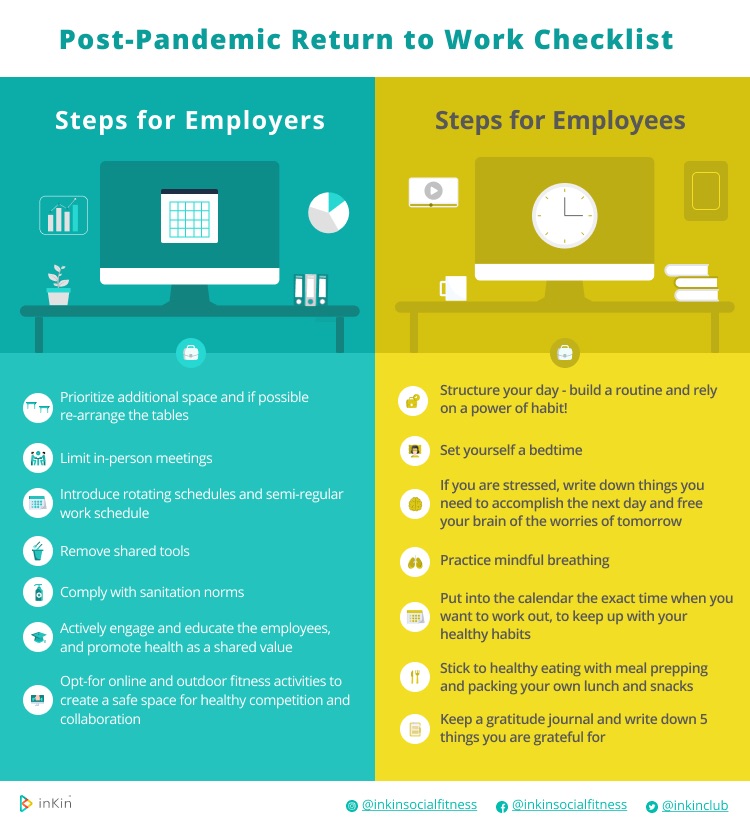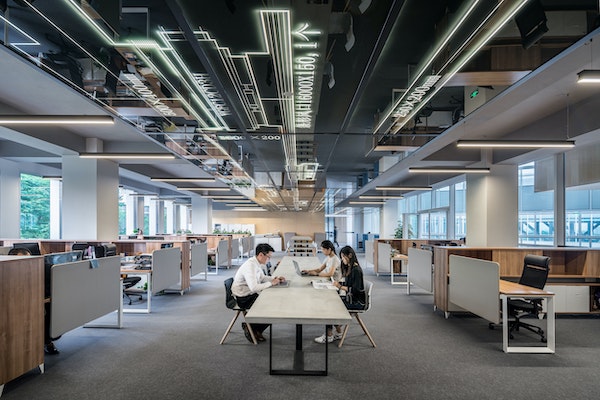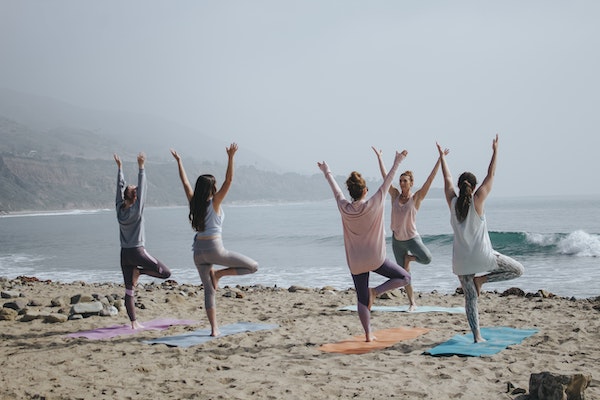

When we finally got used to the home office, online meetings, and always at home mode, countries begin to easing the lockdown and prepare to go back to office life. For some of us, it's a long-awaited moment, while for others, this idea alone poses a challenge. How to do it best? And what's the back to work checklist? The other question we all have in mind is how to keep healthy habits we managed to build while working from home. We will no longer have a flexible schedule to workout during the day or be just one room away from home-cooked meals and healthy options we stocked on. Here is our post-pandemic return to work guidance.

A company has a specific responsibility if not legal, then moral, to support employees and create a positive environment on site. Make time and effort to take measures and make this transitional period a less stressful experience.
There is a need to elaborate on a specific behavioral protocol on the company's level. Some people are anxious about getting back to the office after the lockdown and interact with multiple people throughout the day. To decrease the level of stress, a company needs to put preventive measures. Create a space that will follow the social distancing rules so that people could focus on tasks and don't try to measure the distance to the closest colleague in their mind.
Prioritizing additional space is the first thing that comes to mind. Introduce a limit on in-person meetings. Invite only those who are needed and make the decision you are about to discuss. There is no need to gather every member of the team if one manager can give updates on the progress and then translate the decisions made during the meeting to the team. An additional perk of such an approach is that you will most probably cut the meeting time.
Also, a company can re-arrange the rooms and make the space between desks bigger, opt-for the individual desks instead of a join table. If the office space isn't big enough to move tables, there is another option. A company can limit the number of employees in the workplace at one time, introducing rotating schedules. In the past months, all the employees proved that they can stay at home and yet work productively. So, one of the options to minimize the risks is to come up with a semi-regular basis. A company can decide what groups of employees are 100% needed at the office every day of the week, and who can come once or twice. If a company works in teams, then rotate the teams that are present at the office. Flexibility is the key to operating and making the best out of the situation.

Another critical issue is sanitation norms. This situation taught us the importance of washing hands and sanitizing the surface. It's up to the company to decide whether the employees should wear office masks. But there are plenty of other things that we keep forgetting while working. To minimize the risks, a company needs to remove shared tools like whiteboard markers and remote controls. That's just one more step that we need to adjust to, but in the end, it's all done for the best.
This situation showed that the most vulnerable of us are people with chronic diseases. Now is a perfect time to raise awareness of the importance of health and wellness practices and address risk factors to make people less prone to illnesses.
One of the ways to achieve long-term behavioral modifications is to build a culture of health at the company. That means the employer should not only provide wellness options or reimbursement, but actively engage and educate the employes, create an ecosystem, and promote health as a shared value. Cultural transformation requires time and a systematic approach, but it proved to reduce health-related costs and improve health indicators.

At a company with a culture of health, wellness practices are embedded in day-to-day operations. It's not a one-time event, but rather a prolonged program encouraging employees and monitoring the results. Another critical factor is the involvement of the leadership. The culture can't be reinforced if the top-management broadcast a completely different picture of life. Companies where leaders act as role models show higher engagement and satisfaction results.
Current times are good to start and further elaborate on a corporate fitness program due to some reasons. First, most people will strive to rebuild human connections, and corporate fitness initiatives provide a safe space to do so, instead of opening up on-site facilities, opt-for online options, and outdoor activities. That way, employees will feel safe, but still, have an opportunity for healthy competition and collaboration.
Besides restoring human connections and a sense of community, fitness programs are an excellent way to relieve stress. Even before the pandemic, work-related stress was named as the leading workplace health problem, ranking above physical inactivity, and obesity. In addition to stress over deadlines and meetings, now, we also stress over the situation with the virus. We wonder if it's safe actually to come to crowded places like an office. Physical activity is an excellent way to manage stress and prevent mental breakdowns.
Exercise helps to get over day's irritations and concentrate on the body's movements. It boosts the production of endorphins, the so-called hormones of happiness, and reduces levels of the body's stress hormones, such as adrenaline and cortisol. So, physical activity on the hormone level programs our body to calm down, improve mood, and manage stress. Those benefits are achieved with any exercise, whether it's running, lifting weights, or dancing.
Last but not least, physical exercise improves health conditions, helps manage the weight, and reduce the impact of risk factors. Regular physical activity can reduce your risk of developing type 2 diabetes, lower risks for developing some types of cancers, heart disease, and stroke.
This time feels like the first day of the academic year back at the school days. How to get back to the office, stay healthy, and retain some of the good habits we've built over the isolation time. Most probably, some of the things you've introduced with the isolation have already turned into habits. And going back to the office, we once again need to rethink the way we sleep, the way we eat, and the way we train.
Spontaneity is often praised as something creative people trust. The decisions you make right on the spot add a sense of adventure into life. But when it comes to long-term changes and sustainable results, a structured routine is what matters. Even the most talented people say that to create something extraordinary, it takes days and months of repeated actions.
One day your inner voice will tell you to go for a run, while the other it will whisper you to stay up late and watch a new show. You can just hope that the other day you will be more motivated to choose a healthy option over the unhealthy one. That's why it's so essential to build the routine and rely on a power of habit.
List things you want to work on. Here are a couple of questions that will help you identify areas of life you most probably need to focus on:
Those questions will help you explore such spheres of life like sleep, nutrition, mental health, and fitness. You may struggle in all of them, but pick one priority at a time. Studies show, going after several habits at once, you decrease your chances to stick to any of them.
If you prioritize sleep, then think about night time routine. As the key to waking up fresh and energized is to go to sleep at the right time and with the right mindset.
If you struggle with staying active throughout the day, as now you are back at the office and can't work at the table for one hour and then move to the other room. Remain active in the office. Schedule short breaks to stretch or do a quick session of office yoga. Find some inspiration on YouTube:
Also, while planning the week, put into the calendar the exact time when you want to workout. Otherwise, you will always have other tasks to do instead of it and will push the exercise to the next day.
During the isolation, many people discovered that they are great cooks. It was a period when we had time to experiment, try out new recipes and combinations. It's essential to keep on a proper diet while getting back to the office. Our health starts from the inside. Choices we make every single day makes a huge difference.
An excellent way to stick to healthy eating is meal prepping. It can take the form of batch cooking. For example, on Sunday, you cook a large meal that will last you a couple of days. That way, you will always have something to grab for lunch or eat after a long day. Another option is to prepare individually portioned meals. You can choose 3 or 4 easy meals and cook everything in one day. Divide it into separate containers, and freeze it, or leave it in the fridge. Every morning just crab one lunch box on your way to the office.
Search online for the creative recipes that will nourish your body. For example, try out these six easy recipes:
If you are one of those people who hate eating the same thing every day, then you can individually prep ingredients instead of meals. Chop veggies, roast them in the oven and freeze to use it as lego for your recipes.
Meal prepping has lots of benefits. It saves time and money. It makes it easier to avoid junk food and supermarket frozen dinners. You will skip fewer meals. And it's an excellent post-coronavirus return to work plan, as vending machines and office kitchens are less safe than home-cooked options.
Pandemic took us all by surprise. But not all the changes were bad. We had to sit at home and entertain ourselves within four walls, but at the same time, it allowed us to slow down and re-evaluate everything we do. Instead of hours we spend commuting to work, driving from one meeting to the other, rushing from one event to the other, we had time to reconnect with the family, to allocate some time for the things we always wanted to do. We started to appreciate small things and noticing the changes. That's something we need to keep in our lives.
A slower-paced life gives us room to enjoy and appreciate what we've achieved and where we stand. While always striving for more and comparing results with others leads to anxiety and fear, it creates a mindset of scarcity and impatience. One of the practices that can help to keep that state of mind is a gratitude journal. It reminds us of the little things we tend to neglect. Plus, if you know you need to write down five things you are grateful for every evening, you start to pay attention throughout the day and notice the beauty in ordinary things.

Breathing exercises are another effective mindful practice. It can be a 10-minute meditation focused on breathing or just a couple of deep conscious breaths. By taking deep breaths, the heart rate slows down; your blood pressure gets lower. More oxygen enters the blood and nourishes the brain. Mindful breathing reduces stress levels in the body and regulates the body's reaction to stress and fatigue. In the long-run, breathing exercises makes you more aware of your body.
These are some recommendations on the post-pandemic return to work policy. The employers have an individual responsibility to prepare the office and take measures to make the return safe and less stressful. The employees can take this time as a learning experience. Yes, we've all already got used to the new norms and social distancing, but don't let this period just go away without taking anything from it. Reflect on the past months. What has the quarantine taught you? What are the quarantine habits you want to stick to?
Photo Credit: Unsplash
